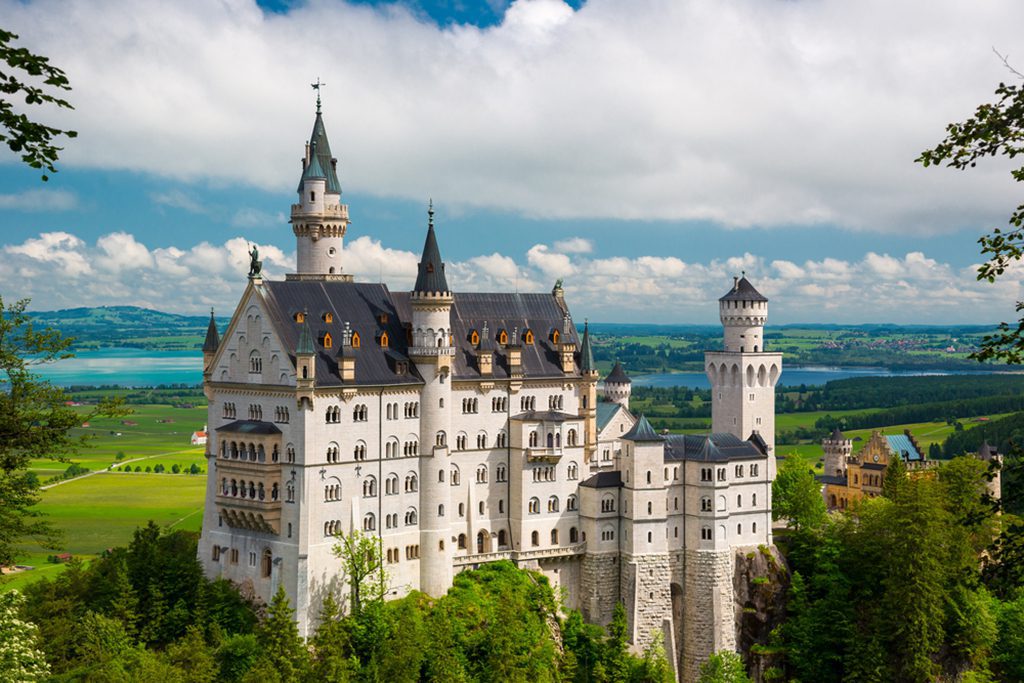Since its reunification, Germany has become more popular as a tourist destination, even though it is still far less well-known or understood by outsiders than other European nations. Berlin, one of Europe’s most intriguing cities, is a top pick among travelers.
Other large German towns also have a rich history as either city-state capitals or royal seat capitals. However, the cities of Germany aren’t the only places where tourists may have a good time; the country as a whole is home to several fascinating destinations.
25. Volkerschlachtdenkmal in Leipzig
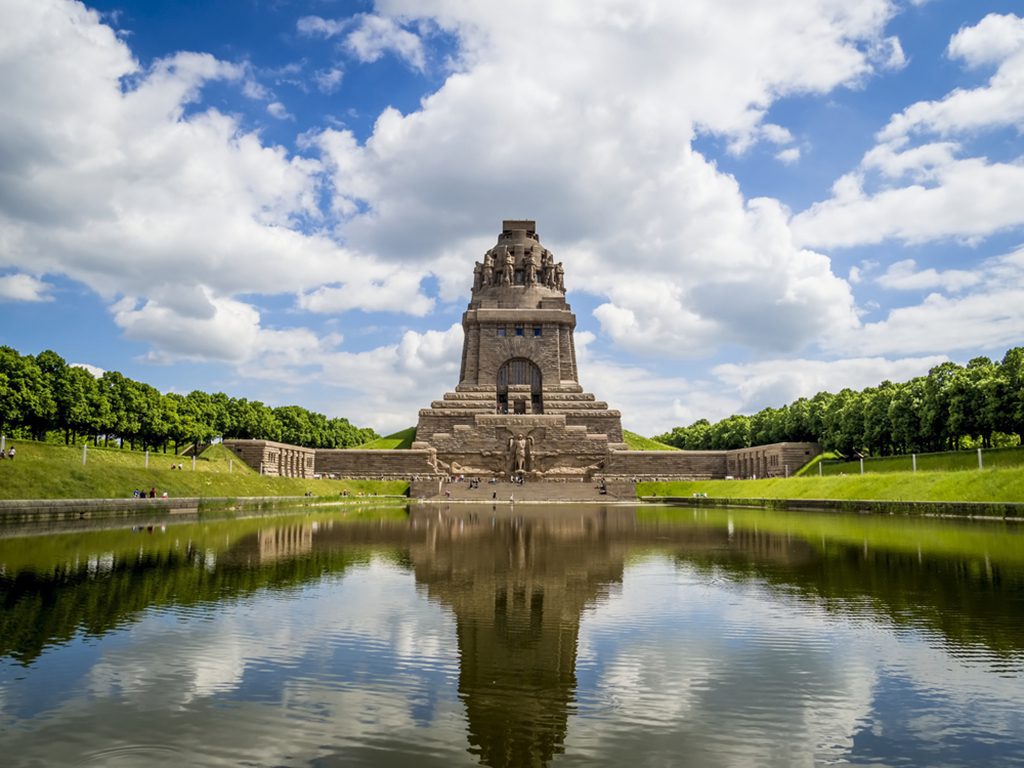
The Monument to the Battle of the Nations in Leipzig, Germany. Image source: dwphotos/Shutterstock.com
One of Europe’s greatest monuments may be seen in Leipzig, a prominent city in the Saxony region. The Monument to the Battle of the Nations, or Volkerschlachtdenkmal, stands as a reminder of the Napoleonic War’s Battle of Leipzig. More than 100,000 troops were killed in action. The memorial wasn’t dedicated until 1913, even though the fight itself happened in 1813. A museum display detailing the fight and the Napoleonic conflicts of the nineteenth century now stands next to the monument.
24. Old Town Hall in Bamberg
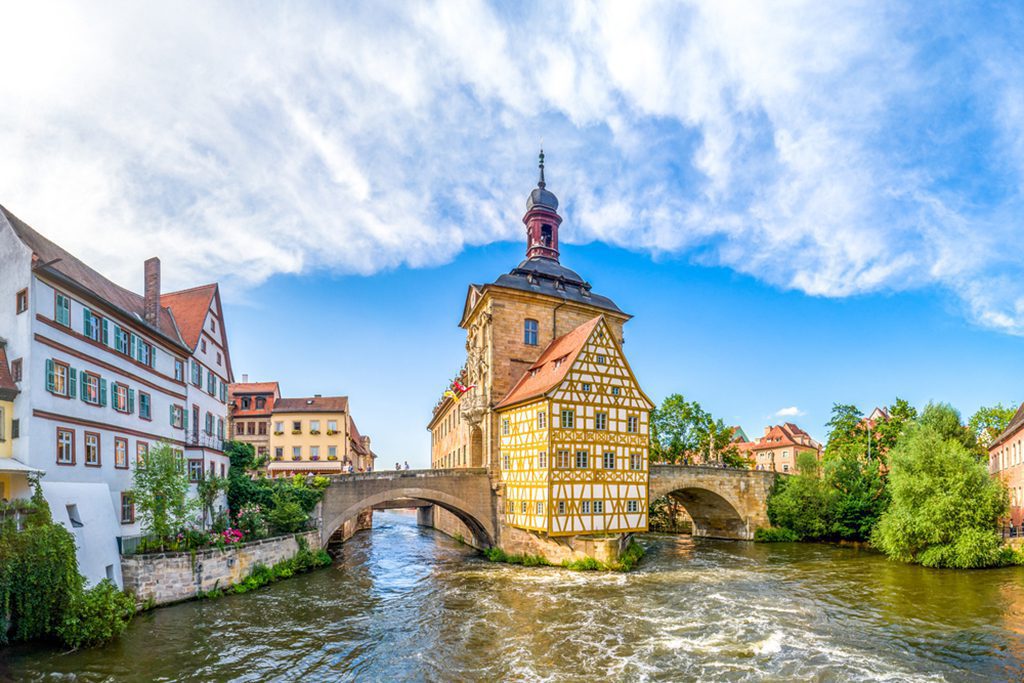
The Old Town hall in Bamberg, Germany. Image source: Sina Ettmer Photography/Shutterstock.com
There are many interesting buildings to see in the Bavarian city of Bamberg, which is steeped in history. The Altes Rathaus, or Old Town Hall, is by far the most fascinating and significant building in all of Berlin. Supposedly, the bishop of the city forbade the construction of a town hall on any of the already-owned properties, so the citizens had to choose another location. The Altes Rathaus is at the center of a bridge over the Regnitz River, and its interior is covered with stunning paintings.
23. Harz Mountains
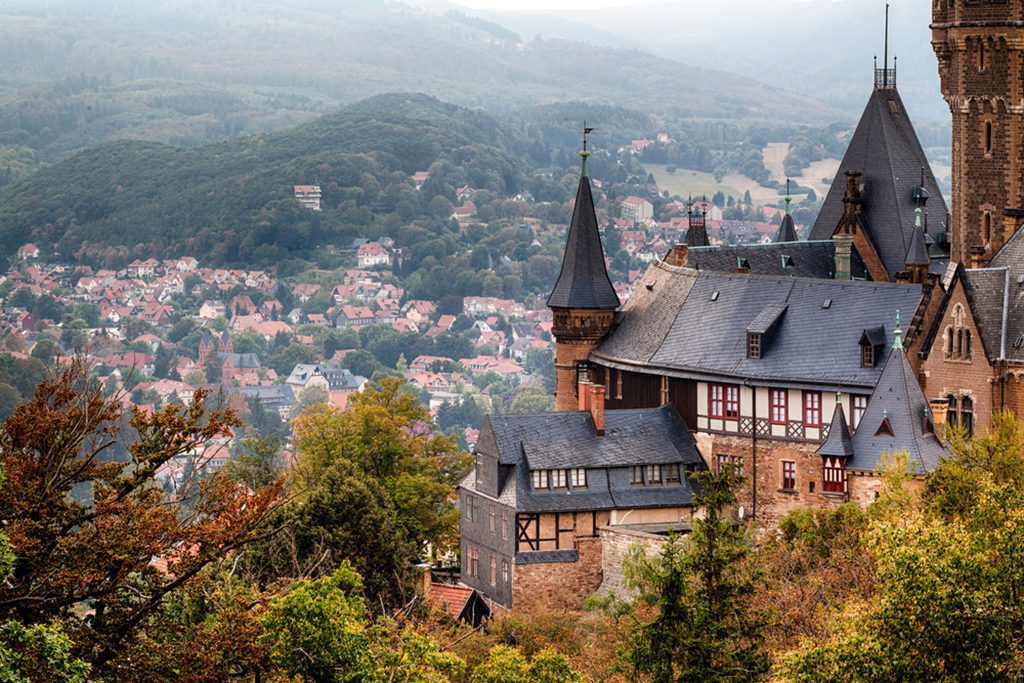
The Harz Range is one of Germany’s tallest mountain ranges and is known for its medieval architecture, snowy peaks, and tranquil waterways. It was among the Harz Mountains that the Grimm Brothers, authors of some of the world’s best-known fairy tales, set a few of their own stories. The Harz Slopes are somewhat off the beaten path and provide activities such as climbing to the top of Brocken, the highest peak, and riding an actual steam train through the mountains and valleys, despite the low number of visitors that visit.
22. Aachen Cathedral
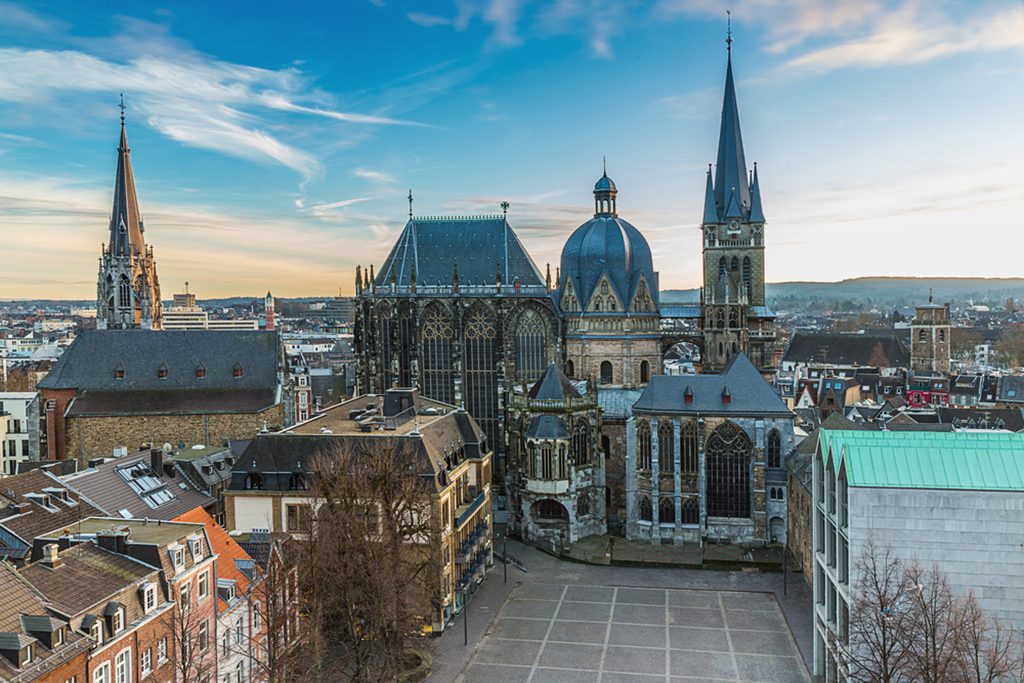
The Aachen Cathedral in Aachen, Germany. Image source: r.classen/Shutterstock.com
The Aachen Cathedral, which is the oldest in all of northern Europe, can be found close to the border with Belgium and the Netherlands. The cathedral’s construction dates back to the ninth century, and its architecture combines Carolingian and Gothic elements. Charlemagne commissioned the construction of the cathedral, and it has served as the site of several coronations throughout the ages. The amazing bronze Wolf Doors from the ninth century and the golden mosaics in the Palatine Chapel are two of the most remarkable attractions for modern-day tourists.
21. Sylt
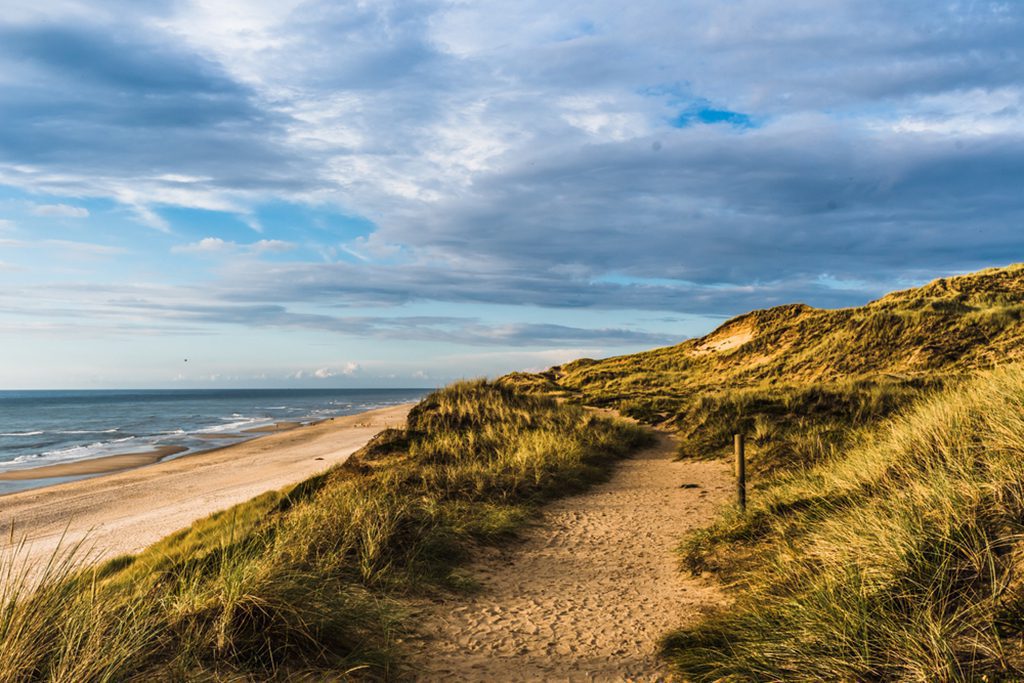
A sand dune covered in vegetation on the island of Sylt, Germany. Image source: Daniela Baumann/Shutterstock.com
The North Frisian Islands may be found in the North Sea, just off the coast of northern Germany. Although its northern position makes Sylt less accessible to holidaymakers than other German tourist sites, the island is nonetheless one of the most popular destinations in the country. Sylt is home to miles upon miles of sandy shores, picture-perfect dunes, and classic lighthouses. The beach and a modern hotel are only a short walk from the quaint cottages with thatched roofs and the wide open meadows. Bicycle tours of the island are also quite common.
20. Quedlinburg
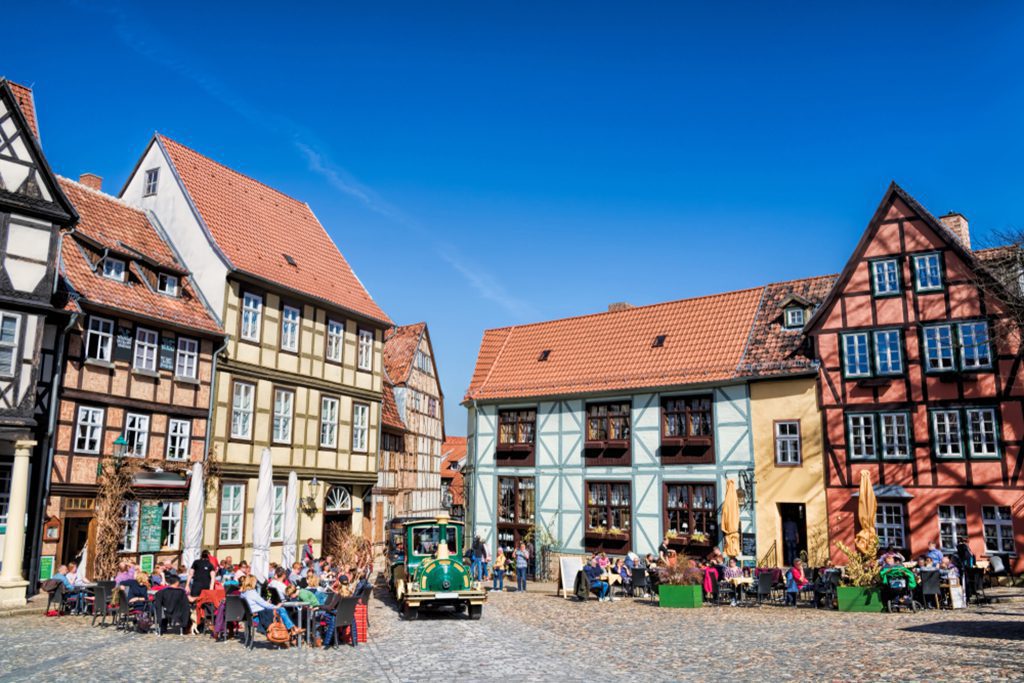
A charming street in the old town of Quedlinburg, Germany. Image source: ArTono/Shutterstock.com
Quedlinburg, to the north of the Harz Mountains National Park, is a scenic and attractive village. Thousands of half-timbered homes may be seen from the cobblestone lanes that tourists can stroll around. Due to the fact that it was little touched by the war, this town is one of the few in Germany to have maintained its ancient charm. In addition to its historic homes, Quedlinburg is also noted for its German Romanesque cathedral, the Dom, and its many museums dedicated to preserving and showcasing the city’s rich cultural heritage.
19. Saxon Switzerland National Park
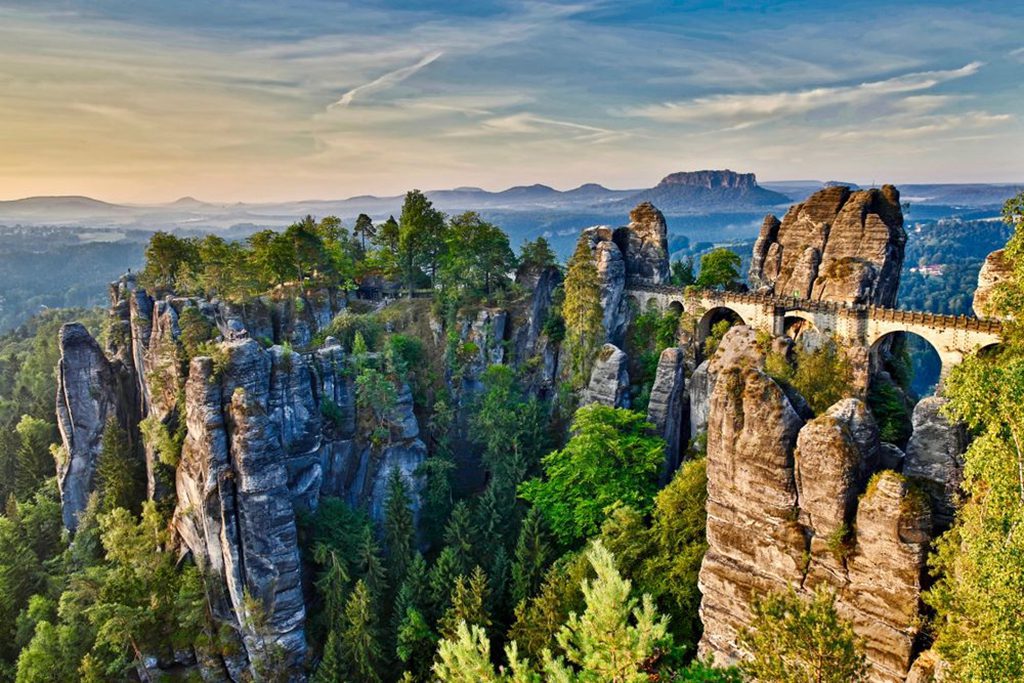
A breathtaking view of the iconic Bastei Bridge in Saxon Switzerland National Park, Germany. Image source: David Pineda Svenske/Shutterstock.com
The Saxon Switzerland National Park is a large park located among the beautiful Elbe Sandstone Mountains, not far from the city of Dresden. This park extends into the Czech Republic, where it is known as the Bohemian Switzerland National Park. Stunning rock formations, deep valleys, and miles of hiking paths may all be found in Saxon Switzerland National Park, which is located along the Elbe River. You may also do rock climbing and mountain riding if you visit the national park.
18. Schwerin Castle
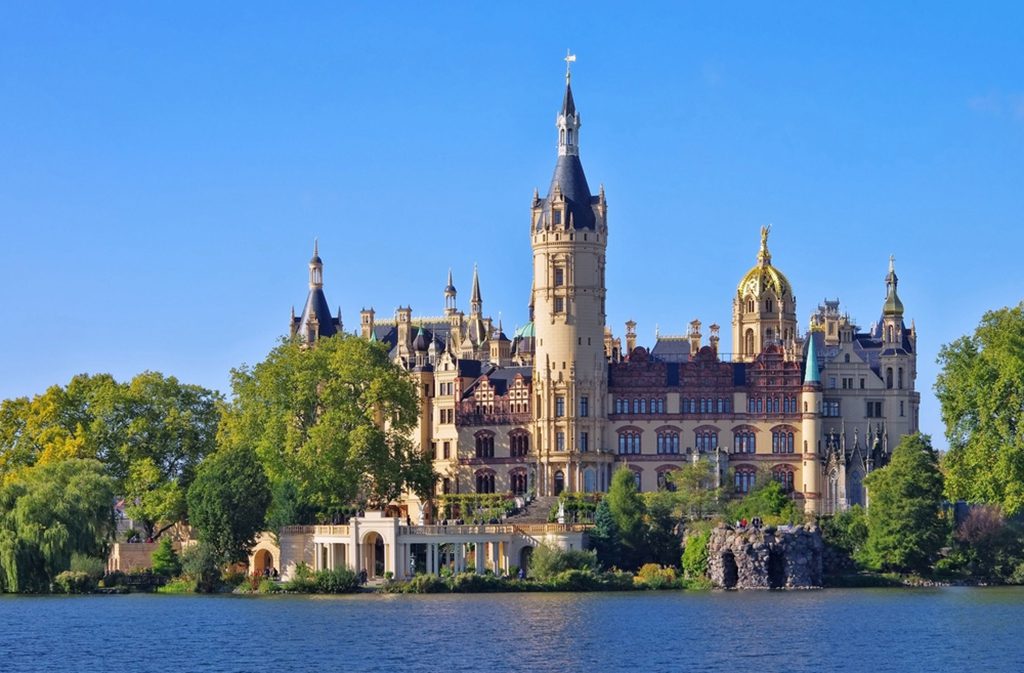
: A stunning view of the magnificent Schwerin Palace in Germany. Image source: LianeM/Shutterstock.com
The Schwerin Castle in Schwerin is a major tourist destination for the state of Mecklenburg-Vorpommern. The castle’s odd location on an island in the Schweriner See further adds to its allure. Schwerin Castle, first constructed in the 14th century and currently serving as the seat of administration, welcomes visitors on both guided and unguided tours. Many people visit the castle every year because of the tales that say it is haunted by a ghostly monster known as Petermännchen.
17. Rugen Cliffs
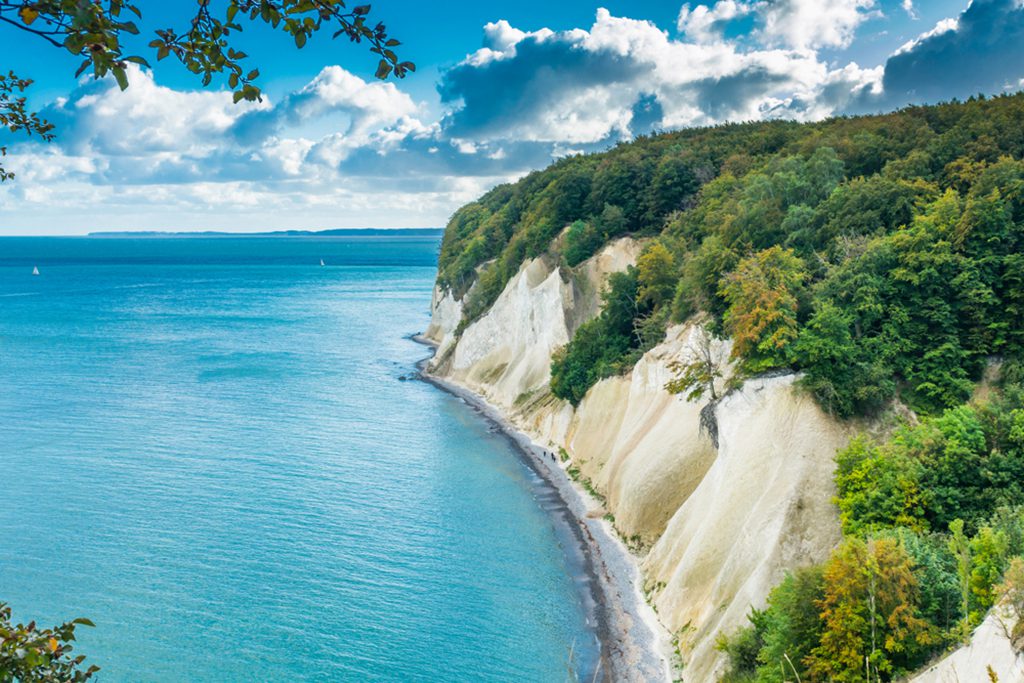
the natural beauty of the Chalk Cliffs in Jasmund National Park, Rugen Island, Germany. Image source: konradkerker/Shutterstock.com
In the northeastern part of Rügen island, in Jasmund National Park, is where you’ll find the Rügen Cliffs. The chalk cliffs are constantly being eroded as they rise above the Baltic Sea. The Königsstuhl (king’s chair) is the highest point of the cliffs at 118 meters (387 ft). The park’s boundaries also include the pristine woodlands located behind the cliffs.
16. Berchtesgaden
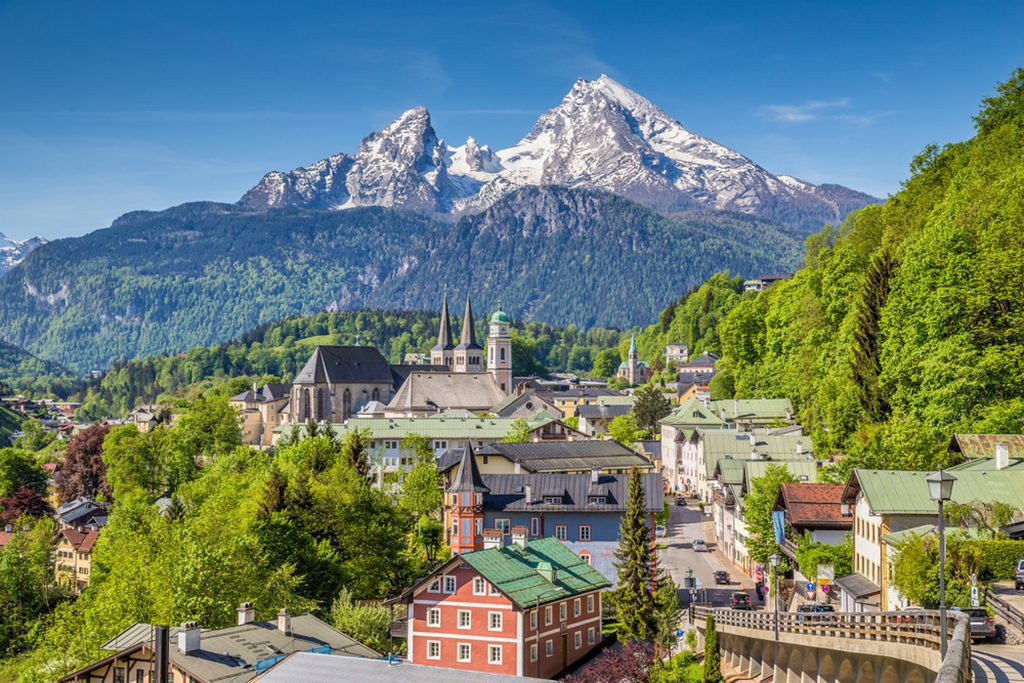
the historic town of Berchtesgaden with the Watzmann mountain. Image source: canadastock/Shutterstock.com
The little alpine village of Berchtesgaden is in southern Bavaria, close to the border with Austria. However little it was, Berchtesgaden was crucial to the development of Germany. Berchtesgaden was historically significant due to its salt mines, but is now better recognized as Adolf Hitler’s vacation residence. The Eagle’s Nest, or Kehlsteinhaus, at the peak of Berchtesgaden is the main attraction. The building was protected, and it is currently used as a museum, even after the war has ended.
15. Reichstag in Berlin

: the modern architecture of the government district in Berlin, Germany. Image source: frank_peters/Shutterstock.com
One of the most significant historical structures in Berlin is the Reichstag. The Reichstag, which dates back to the 19th century but was seriously damaged during WWII, underwent a massive refurbishment in the 1990s. The Reichstag in Berlin was designated as the nation’s capital when the Cold War ended, and the Reichstag assumed its role as Germany’s legislative and executive center. It now has a spectacular glass dome that illuminates beautifully at night and provides breathtaking views of the city.
14. Hohenzollern Castle

Hohenzollern Castle, one of the most impressive medieval castles in Germany. Image source: leoks/Shutterstock.com
Located in the foothills of the Swabian Alps, the neo-Gothic Hohenzollern Castle overlooks two tiny villages. The castle, built in the nineteenth century, is the third to occupy the site in the previous millennium. Hohenzollern Castle has sumptuous halls with stained glass windows and artistic paintings, and it is located in a commanding position over the surrounding countryside. The Schatzkammer serves as the family’s treasury, housing valuables and historical relics.
13. Zugspitze
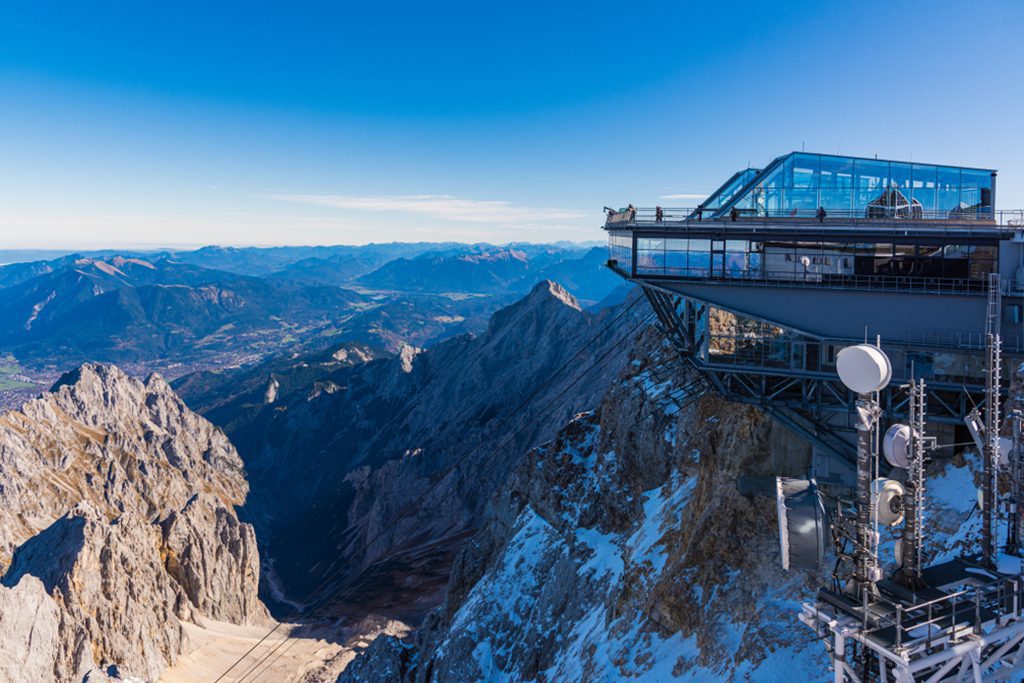
Enjoying the view from the top of Zugspitze, Germany. Image source: KazT/Shutterstock.com
Overlooking the town of Garmisch, the Zugspitze is Germany’s highest peak. Skiers from all over the globe flock to this summit, but visitors won’t regret making the ascent in any season. The Zahnradbahn is a cogwheel railway that departs from a lake at the mountain’s foot and travels up the mountain. The Eibsee-Seilbahn cable car takes you to the next stop. At the peak, visitors may take in panoramic vistas from no less than four different nations.
12. Nuremberg Christmas Market
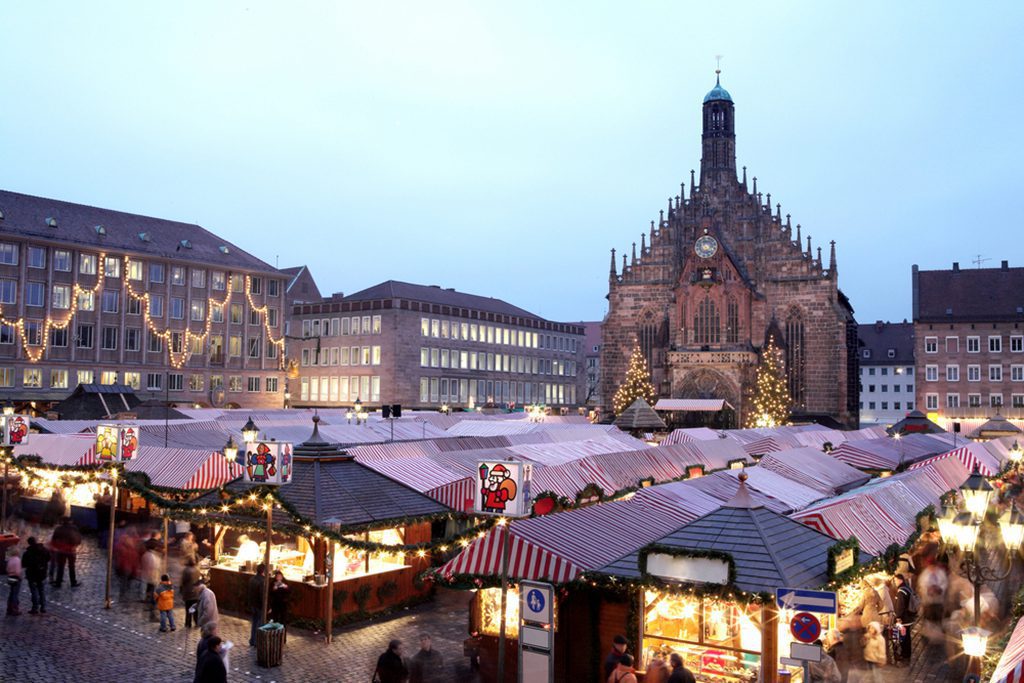
Busy scene at a nighttime flea market in Neurenburg, Germany. Image source: Sean Nel/Shutterstock.com
Nuremberg, in the state of Bavaria, has one of the most famous Christmas markets in all of Germany. Since the 17th century, Nuremberg’s old town has played host to the annual Christkindlesmarkt during the month of Advent. After dusk, the lights of the market illuminate the stalls offering authentic German souvenirs, holiday decorations, mulled wine, and lebkuchen, a typical German gingerbread biscuit.
11. Rothenburg ob der Tauber
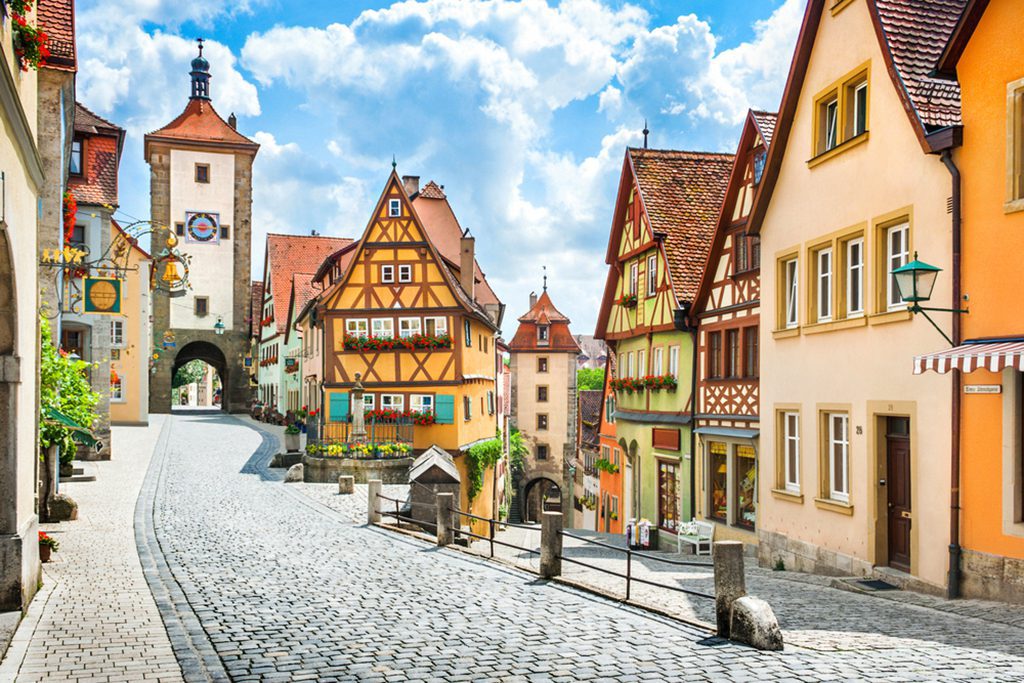
A stunning aerial view of the historic town of Rothenburg ob der Tauber. Image source: canadastock/Shutterstock.com
Rothenburg ob der Tauber is like a scene out of a fairy tale. This Franconian village seems like something out of a storybook, with its perfectly maintained medieval core. Many of the churches and homes in this area, which sits above the Tauber River, were built in the 15th and 16th centuries. One of the town’s most notable features is the 13th-century Town Hall Tower, which stands on one side of the Market Square.
10. Black Forest
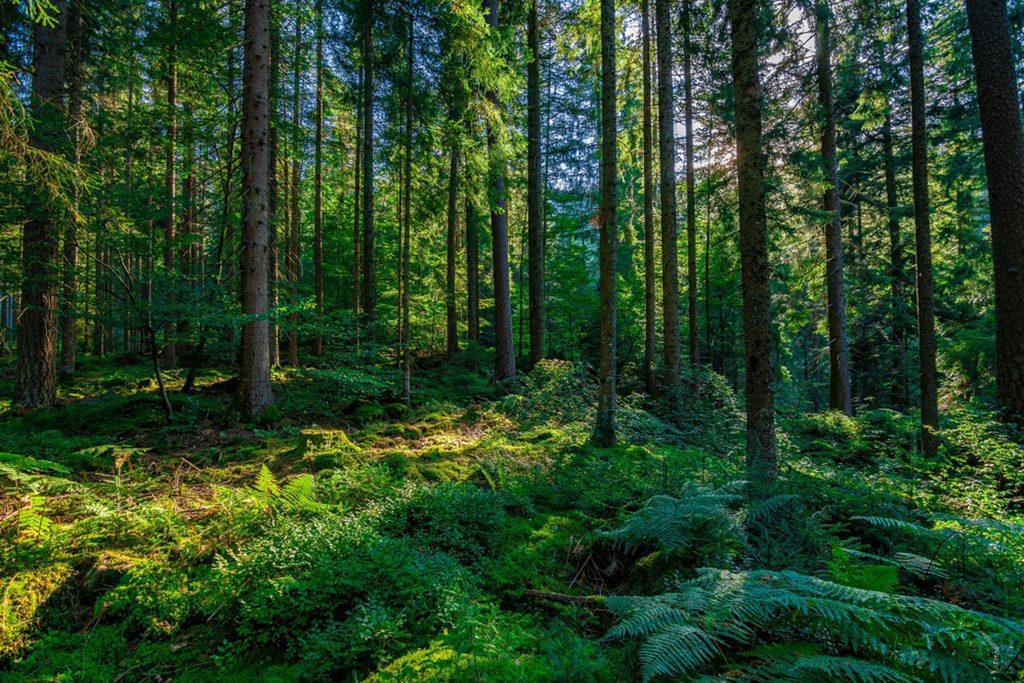
A beautiful view of the lush greenery in the Black Forest, Germany. Image source: Arthur Palmer/Shutterstock.com
Towards the southwest of Germany is a large forest region known as the Schwarzwald (or Black Forest). The dense tree cover is the inspiration for the forest’s moniker, and the area is a haven for nature lovers and adventurers. The Black Forest is a popular destination for outdoor enthusiasts who like activities like hiking, bathing in icy Alpine lakes, and mountain biking, but urban visitors also have options. Several cities and settlements may be found within the forest. While Freiburg is a lively university town with fantastic gastronomy and a vibrant nightlife, the world-famous spa resort of Baden-Baden is ideal for a relaxing getaway.
9. Romantic Rhine
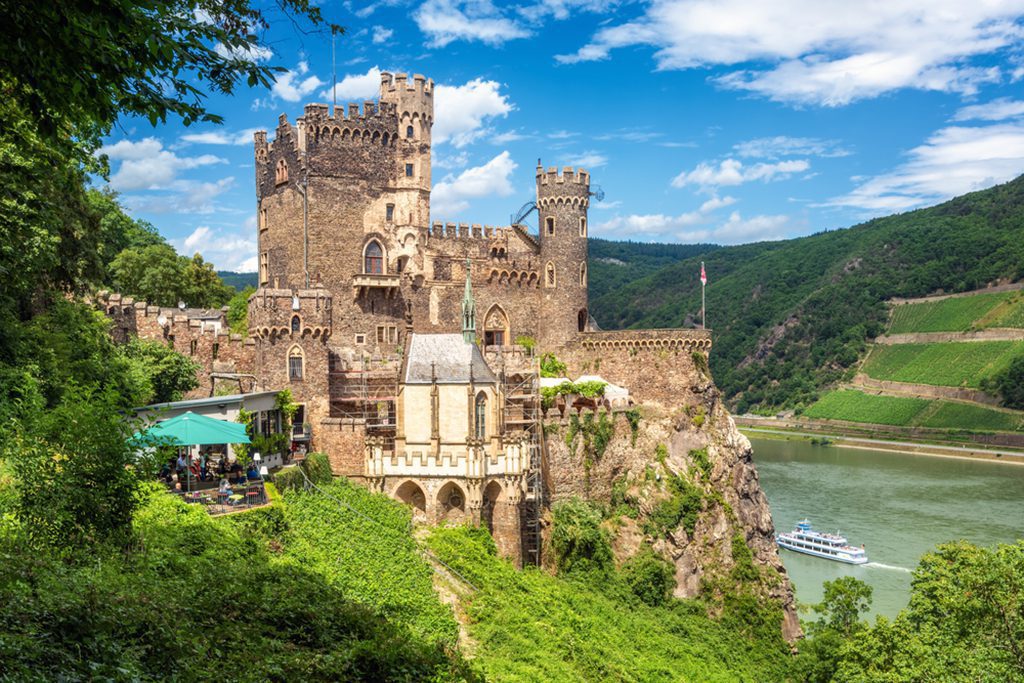
Historical Burg Rheinstein castle, one of the biggest and most famous castles on Rhine river in Germany. Image source: Boris Stroujko/Shutterstock.com
From Koblenz to Bingen, the Romantic Rhine is the most renowned part of the Rhine. Here, the Rhine winds its way through high hills covered with vineyards and crowned by a profusion of castles and ruins. Several tiny settlements have developed along the river’s banks since it has served as a vital commerce route into central Europe since prehistoric times. Due to their small size, many of these historic districts still exude an air of the past.
8. Frauenkirche in Dresden
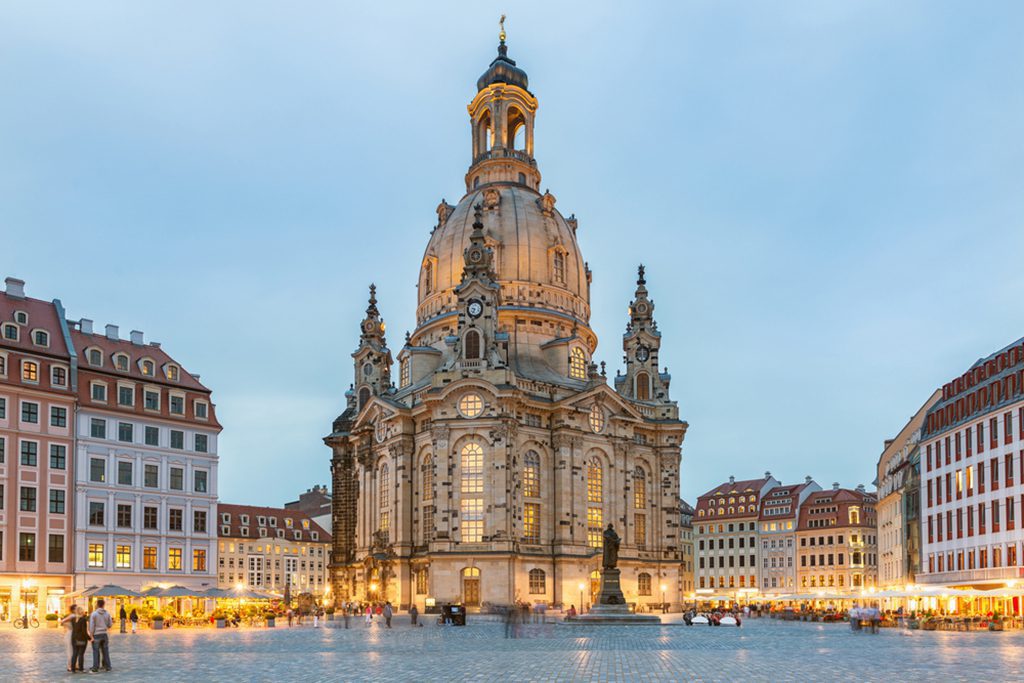
Beautiful panoramic view of Dresden, Germany. Image source: tichr/Shutterstock.com
The Dresden Frauenkirche (Church of Our Lady) was a Lutheran church that was entirely bombed during World War Two. The 1720s blueprints were used to rebuild the church, which reopened in 2005. The church’s golden cross came from Coventry, which was bombed by the Luftwaffe. The Frauenkirche has been a major draw for visitors to Dresden since it reopened. President Barack Obama attended a church service there in 2009.
7. Lindau
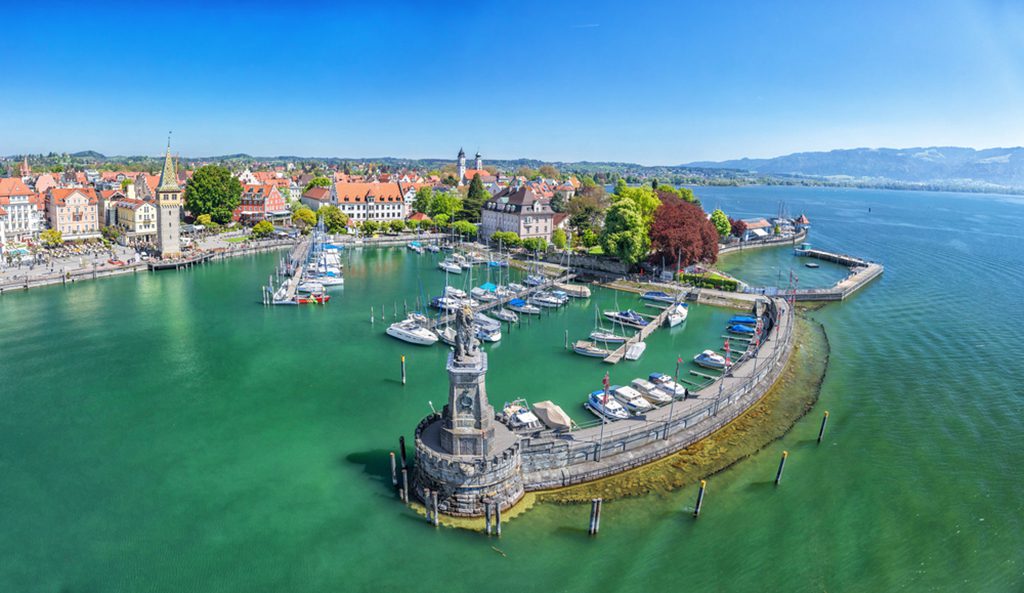
Beautiful view of Lindau harbor on Lake Constance, Bavaria, Germany. Image source: Sergey Dzyuba/Shutterstock.com
Lindau, a city rich in history, can be found on eastern Lake Constance, not far from the point where the Austrian, German, and Swiss borders meet (Bodensee). About 3,000 people call this city home, and it’s linked to the mainland by bridge and train. Lindau is a famous destination due to its abundance of medieval and half-timbered architecture.
6. Oktoberfest
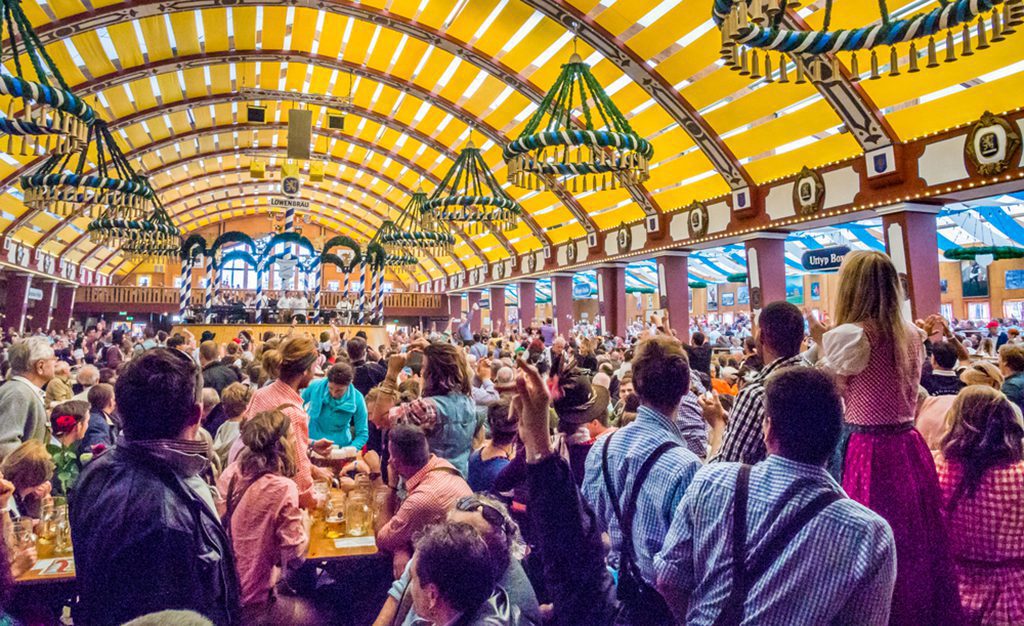
: Interiors of Loewenbraeu-Festhalle tent at Oktoberfest in Munich, Germany. Image source: Takashi Images/Shutterstock.com
Over 6 million people attend Munich’s Oktoberfest every year, making it the world’s biggest Volksfest. The festival is held from the last weekend in September to the first weekend in October, despite the name. The event has been a staple of Bavarian culture since 1810. Hendl, Schweinebraten, Würstl, Knödel, and a variety of other traditional dishes, as well as copious amounts of German beer, are popular with tourists.
5. Cologne Cathedral
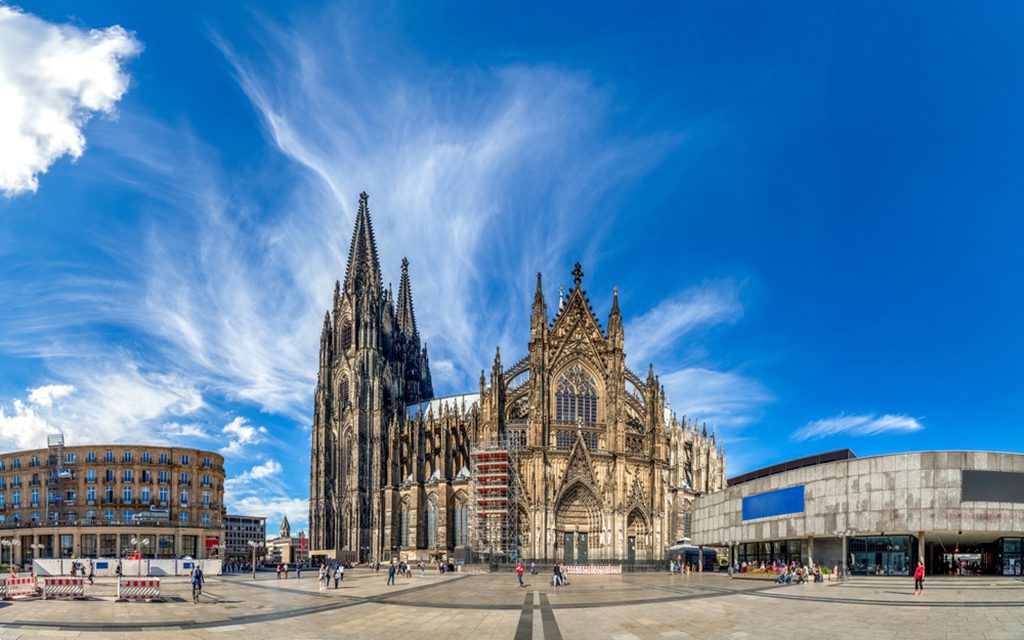
Stunning view of Cologne Cathedral at sunset, Germany. Image source: Sina Ettmer Photography/Shutterstock.com
The Cologne Cathedral, also known as the Kölner Dom, has been the city’s most recognizable landmark for centuries. The foundation for what is now the Cologne Cathedral was laid in 1248, and it took more than six centuries, with several pauses, to finish. It is the seat of the Catholic Archbishop of Cologne and is dedicated to Saints Peter and Mary.
4. Holstentor in Lübeck
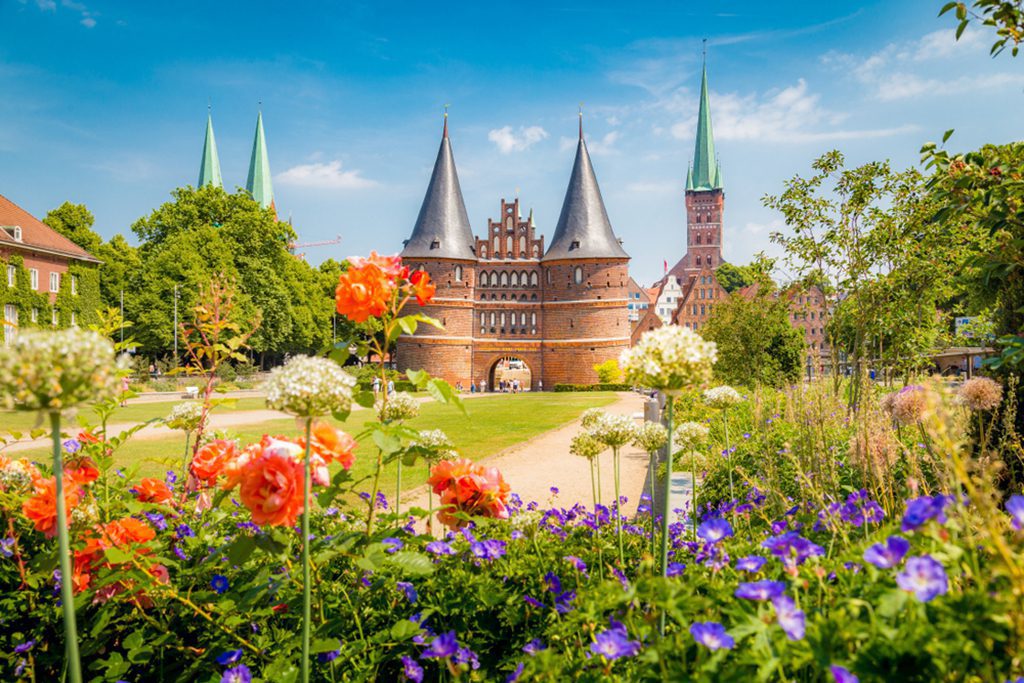
This beautiful postcard view shows the historic town of Lübeck in Schleswig-Holstein, northern Germany. Image source: canadastock/Shutterstock.com
To this day, Lübeck still has two of its original city gates, the Holstentor being one of them. The gate, originally constructed in 1464, is now a museum. It has become an icon of Lübeck due to its two impressive circular towers and impressive arched entryway. It is one of Germany’s most popular destinations, along with Lübeck’s historic Altstadt.
3. Heidelberg Old City
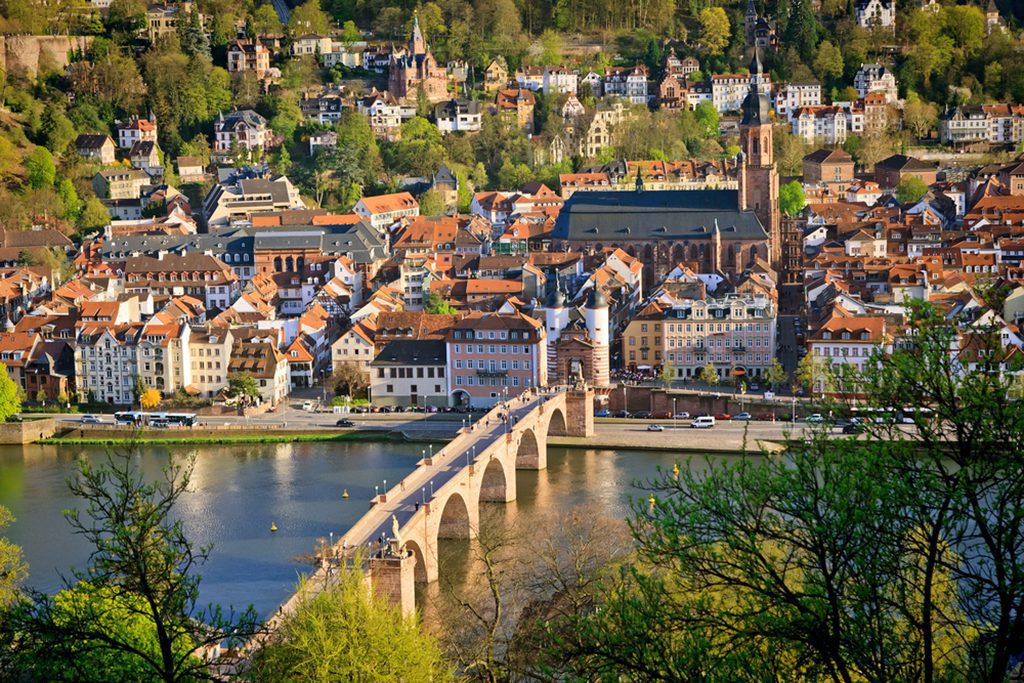
This beautiful spring view captures the charm of Heidelberg, Germany. Image source: S.Borisov/Shutterstock.com
Heidelberg, in the valley of the Neckar River, is a major tourist attraction in Germany. In contrast to the majority of Germany’s main inner cities, this one was mostly spared by Allied bombardment during WWII. Because of this, Heidelberg has managed to keep its historic baroque appeal, complete with its winding lanes, gorgeous homes, and the world-famous Heidelberg Castle.
2. Brandenburg Gate in Berlin
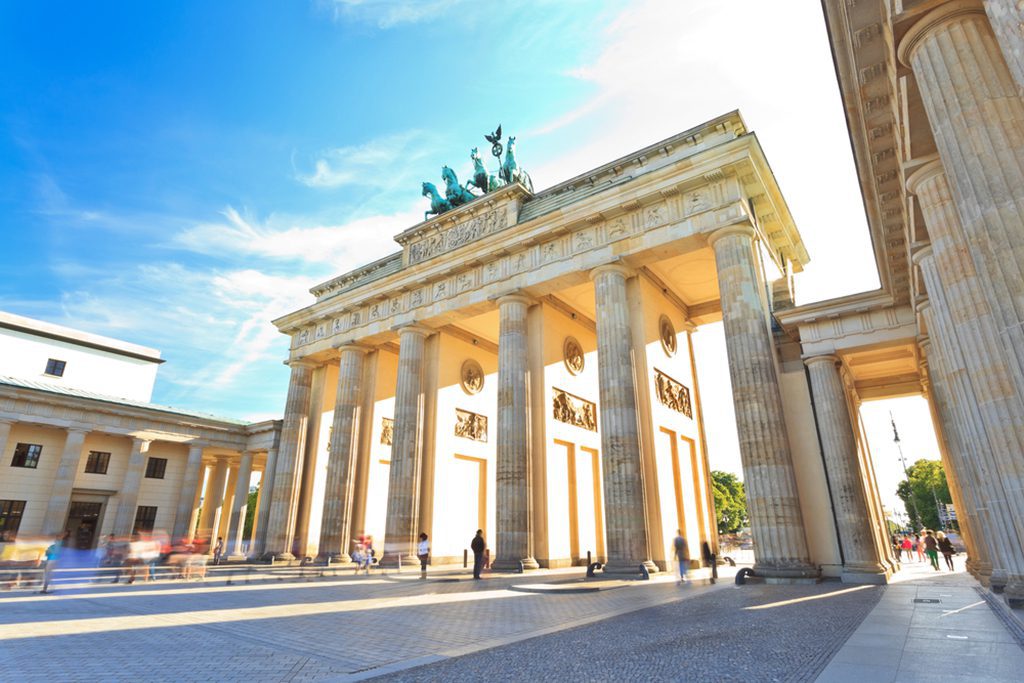
The famous Berlin Brandenburg Gate in Berlin, Germany. Image source: Noppasin Wongchum/Shutterstock.com
As the sole remaining city gate in Berlin, the Brandenburg Gate represents the unity of East and West Berlin. The entrance to Unter den Linden, a famous street lined with linden trees that originally led directly to the palace of the Prussian emperors, is located at the Brandenburg Gate, which was constructed in the 18th century. One of Europe’s most well-known sights.
1. Neuschwanstein
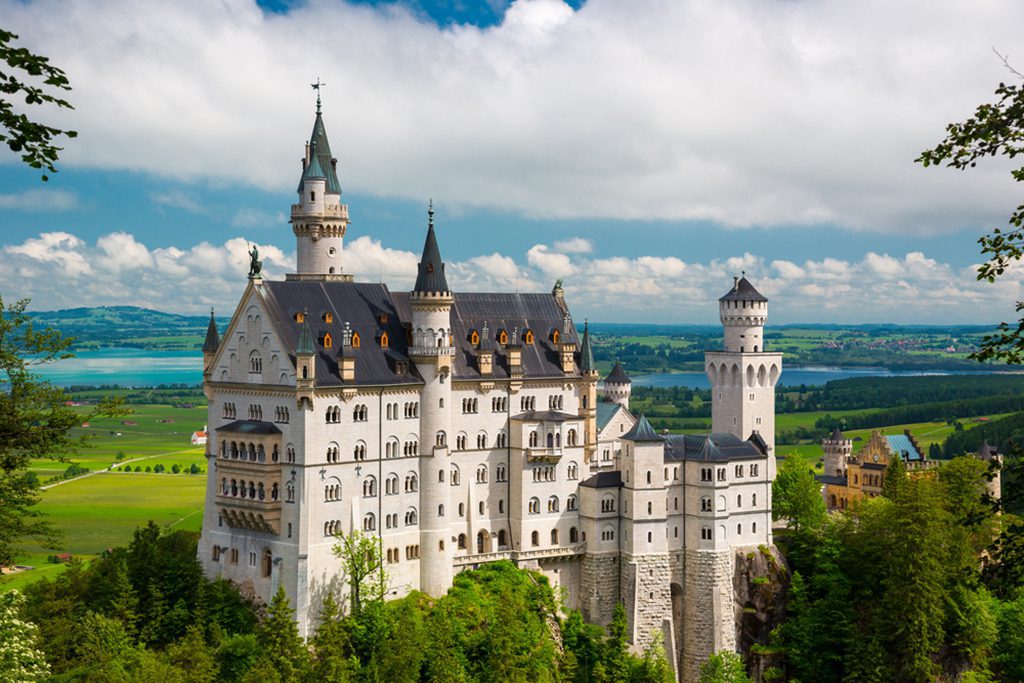
The famous Neuschwanstein Castle in the Bavarian Alps, Germany. Image source: Yury Dmitrienko/Shutterstock.com
Bavaria’s most famous castle, Neuschwanstein, sits on a rocky outcrop close to the town of Füssen. The Sleeping Beauty castles in Disney theme parks were modeled after this one. King Ludwig II of Bavaria commissioned the palace, but he was deemed crazy and was discovered dead only days before its completion in 1886. One of Germany’s top tourist destinations, Neuschwanstein Castle is often featured in national and international media.


